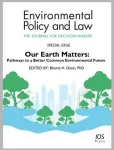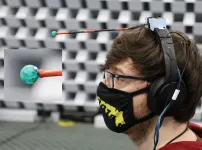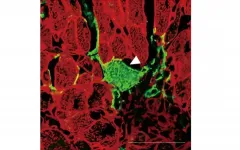Laser physics: Two-stage particle-beam booster
2021-06-02
(Press-News.org) In collaborative international effort, laser physicists at LMU have built the first hybrid plasma accelerator.
Particle accelerators have made crucial contributions to some of the most spectacular scientific discoveries of modern times, and greatly augmented our knowledge of the structure of matter. Now a team of laser physicists led by Prof. Stefan Karsch at the Ludwig-Maximilian University (LMU) in Munich and the Max Planck Institute for Quantum Optics, in cooperation with scientists based at the Helmholtz Centre in Dresden-Rossendorf (HZDR), the Laboratoire d'Optique Appliquée in Paris (LOA), Strathclyde University in Glasgow and the DESY Electron Synchrotron in Hamburg, have now achieved a significant breakthrough in accelerator miniaturization. They have built the first compact two-stage plasma-based accelerator in which particles in a plasma wave initiated by a powerful laser are used to accelerate a beam of electrons.
Particle accelerators have become an indispensable tool for studies of the structure of matter at sub-atomic scales, and have important applications in biology and medicine. Most of these systems make use of powerful radio-frequency waves to bring particles up to the desired energy. One drawback of this approach, which has been the standard methodology in the field for decades, lies in the risk of electrical breakdown when very high levels of electrical power at radio frequencies are coupled into the accelerator. This potential risk effectively limits the field strengths attainable, and is one of the reasons why these accelerator systems are typically many kilometers long. Physicists have therefore been exploring ways of reducing their size by exploiting the fact that a plasma can sustain much higher acceleration fields. In this case, the electric field generated by a powerful laser or a particle beam is used to strip electrons from the atoms in a gas and to create a wake similar to the one produced by a speedboat on water, Electrons surfing on that wake can get accelerated to nearly the speed of light within a distance of only a few millimeters.
Studies on plasma-based acceleration with the aid of lasers, i.e. Laser Wakefield Acceleration (LWFA), are now in progress in many research institutions around the world. In contrast, work with accelerators based on particle beams - a field which is known as Plasma Wakefield Acceleration (PWFA) - has so far been possible only in large-scale accelerator facilities (e.g. CERN, DESY and SLAC), although it offers a number of advantages over LWFA. For example, particle beams do not heat the plasma as much as laser beams and allow to use a longer accelerating distance. This in turn promises to improve the quality of the beam and increase its energy, parameters that are a very important in terms of the technique's potential range of applications.
In their experiments, the authors of the new study were able, for the first time, to build and successfully test a practical and compact particle-based plasma accelerator. The essential breakthrough lies in the fact that the PWFA, which accelerates the final electron beam, is driven by a particle beam from an LWFA. The latter is itself highly compact, so that the hybrid plasma accelerator is only a few centimeters long. Moreover, simulations indicate that the acceleration fields are more than three orders of magnitude higher than that attainable in conventional accelerators. Another promising result of the study is that the data obtained at LMU are confirmed by complementary tests performed with the DRACO laser at the HZDR.
Dr. Andreas Döpp, a member of the Munich group led by Prof. Stefan Karsch, points out that "only a few years ago, the practical realization of such a combination would have been unthinkable. The hybrid accelerator was made possible by subsequent developments in the design of laser-based accelerators, which have led to tremendous improvements in the stability of the beam and in other vital parameters." Much of this progress has been made at LMU, following the installation in the Centre for Advanced Laser Applications (CALA) of the ATLAS laser, which is one of the most powerful of its kind in Germany.
The successful demonstration of the hybrid plasma accelerator represents the latest advance ahead. "We had already shown that our compact plasma accelerator behaves very similarly to its conventional and far larger conventional cousins. So we are confident that we will be able to generate extremely bright electron beams with this set-up in the near future," says Stefan Karsch.
Before the technology can be applied on a wider scale, a number of outstanding challenges must be overcome, but the team are already considering a variety of possible contexts in which such instruments would highly advantageous. "For instance, research groups that have not had easy access to a particle accelerator could utilize the technique and develop it further. Secondly, our hybrid accelerator could serve as the basis for what is called a free-electron laser (FEL)," says Dr. Arie Irman, who coordinated the experiments at the HZDR.
FELs are highly prized radiation sources, which can be used for extremely precise characterizations of nanomaterials, biomolecules and geological samples. Competition for access to these sources, such as the European XFEL in Hamburg, has been correspondingly intense. If such large-scale X-ray lasers could be complemented by the new plasma-based technology in future, such more compact sources could potentially be made available for a broader user base, therefore boosting research with brilliant X-rays as a whole.
INFORMATION:
ELSE PRESS RELEASES FROM THIS DATE:
2021-06-02
Amsterdam, June 2, 2021 - On the eve of the 50th anniversary of the 1972 Stockholm conference that created the United Nations Environmental Programme, it is clear that the global environmental situation has only deteriorated. In "Our Earth Matters: Pathways to a Better Common Environmental Future," an extended special issue of Environmental Policy and Law (EPL), leading scholars from more than five continents call for an honest introspection of what has been attained over the last 50 years relating to regulatory processes and laws and explore future trajectories with new ideas and frameworks for environmental governance in the 21st century.
"Our objective is to fire the imaginations of scholars and decision-makers to re-examine current approaches and to explore the future, ...
2021-06-02
Smoking in early puberty in boys may have negative consequences for their future generations of offspring, a study from the University of Bergen (UiB) shows.
By continued analysis of data gathered in the large international RHINESSA, RHINE and ECRHS studies, researchers have found that the health of future generations depends on actions and decisions made by young people today. This is particularly relevant for boys in early puberty and mothers/grandmothers both pre-pregnancy and during pregnancy, the study shows.
The paper "Prenatal and prepubertal exposures to tobacco smoke in ...
2021-06-02
Humans can observe what and where something happens around them with their hearing, as long as sound frequencies lie between 20 Hz and 20 000 Hz. Researchers at Aalto University have now developed a new audio technique that enables people to also hear ultrasonic sources that generate sound at frequencies above 20,000 Hz with simultaneous perception of their direction. The results have been published in Scientific Reports on 2 June 2021.
'In our study, we used bats in their natural habitat as sources of ultrasonic sound. With our new technique, we can now hear the directions-of-arrival of bat sounds, which means we can track bats in flight and hear where they are - we're ...
2021-06-02
An international team of astrophysicists led by the Stellar Astrophysics Group of the University of Alicante (UA), the Instituto de Astrofísica de Canarias (IAC), and the University of Valparaíso (Chile) has discovered a massive cluster of stars of intermediate age in the direction of the Scutum constellation. This object, which has been named Valparaíso 1, lies some seven thousand light years away from the Sun, and contains at least fifteen thousand stars. To detect it, observations have been combined from ESA's Gaia satellite, and various ground-based telescopes, ...
2021-06-02
Tsukuba, Japan - It is estimated that during a heart attack, one billion cells in the heart are lost. In the wake of the heart attack, the lost tissue is replaced by scar tissue, which can lead to heart failure, arrhythmia and death. In a new study, researchers from the University of Tsukuba have shown how cells in the scar tissue can be converted to heart muscle cells, effectively regenerating the injured heart.
The injured heart of humans and rodents alike does not have the capacity to regenerate after injury. Therefore, the only way for the heart to heal the wound is to build a scar tissue in the injured area. A longstanding goal in the field has been to find a way to reprogram fibroblasts, ...
2021-06-02
Bone-regenerating treatments are in high demand due to the ageing population. Increasingly, the orthopaedic biomaterials used to support these treatments are designed to be "immunomodulatory", i.e., guide the body's inflammatory response. They do this by encouraging macrophages - a type of white blood cell that surrounds and kills microorganisms - to adopt new roles based on signals and stimuli in their microenvironment. This approach has proved effective for developing new bone and for encouraging existing bone to accept artificial implants.
Magnesium is a mineral that not only helps to maintain normal nerve and ...
2021-06-02
BEND, Ore. - Bat researchers say a project in Central Oregon shows citizen science's strong potential for helping ecologists learn more about one of the least understood groups of mammals.
Volunteers listened for the rare spotted bat, Euderma maculatum, within study grids in a 24,000-square-kilometer area in and around the Deschutes and Ochoco national forests. They completed a total of 61 surveys and heard the bat 25 times.
Bat encounters help fill in holes in basic information regarding species abundance and distribution - gaps that impede conservation - and the ...
2021-06-02
FAYETTEVILLE, Ark. - Fine-grained location data gleaned from mobile phones shows that people living in less affluent neighborhoods spent less time at home during the early lockdown and first several months of the coronavirus pandemic.
Researchers tracked data from millions of mobile phone users in the largest U.S. metropolitan areas. Their findings contribute to a growing body of research suggesting that low-wage earners -- a vulnerable group already at greater risk for contracting COVID-19 -- could not afford to comply with stay-at-home orders or worked in ...
2021-06-02
Global oceans absorb about 25% of the carbon dioxide released into the atmosphere when fossil fuels are burned. Electricity-eating bacteria known as photoferrotrophs could provide a boost to this essential process, according to new research from Washington University in St. Louis.
Scientists led by Arpita Bose, assistant professor of biology in Arts & Sciences, found that bacteria found in brackish sediments can "eat" electricity and, in the process, absorb and lock away climate-warming carbon dioxide. This unusual skill was previously thought to be almost exclusive to freshwater bacteria, but may be common ...
2021-06-02
WASHINGTON--A new study finds people who consume two servings of fruit per day have 36 percent lower odds of developing type 2 diabetes than those who consume less than half a serving. The research was published in the Endocrine Society's Journal of Clinical Endocrinology & Metabolism.
Diabetes is a disease where people have too much sugar in their bloodstream, and it is a huge public health burden. Approximately 463 million adults worldwide were living with diabetes in 2019, and by 2045 this number is expected to rise to 700 million. An estimated 374 million people are at increased risk of developing type 2 diabetes, the most common form of the disease. A healthy diet and lifestyle can play a major role in lowering a person's diabetes risk.
"We ...
LAST 30 PRESS RELEASES:
[Press-News.org] Laser physics: Two-stage particle-beam booster






